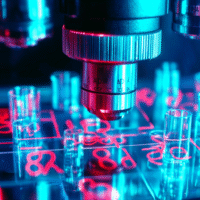“`html
Practical Solutions for Enhancing Visual Perception
A recent study introduced the phosphenotron, a device designed to improve the sensory spatial resolution of phosphenes in the visual field using non-invasive transcranial alternating current stimulation (NITACS).
Key Highlights:
- NITACS applies weak electrical currents to the scalp or face to modulate brain activity, inducing phosphenes without external stimuli.
- The study focused on assessing the spatial resolution of NITACS-induced phosphenes, crucial for advancements in visual aid technology and neuroscience.
- Results showed that NITACS could generate spatially defined phosphene patterns in the visual field, offering potential for non-invasive visual perception modulation.
- Optimal parameters for comfortable phosphene induction were established, and electrode positions were identified that altered phosphene locations within different visual field regions.
- Receiver Operating characteristics analysis indicated a specificity of 70.7%, sensitivity of 73.9%, and a control trial accuracy of 98.4%, supporting the reliability of NITACS for non-invasive visual perception modulation.
“`


























